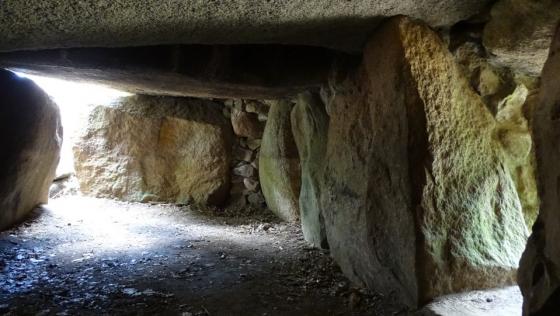taken from the “Faszination Archäologie” information board:
“Schmeersteine”
Neolithic megalithic tomb
Dimensions: about 8 x 1.8 m
The original layout of the megalithic tomb is still relatively well recognizable, although some boulders are not preserved in their original position. The strange name “Schmeersteine” is based on the traditional misbelief that fat and butter (in Low German: “Schmeer”) were sacrificed here some time ago.
Testimony of sedentary life
Megalithic tombs like “Schmeersteine” are considered the oldest surviving structures of northern Central Europe. Until the fourth millennium BC only hunters and gatherers lived in the Wildeshauser Geest. Only the “funnel beaker culture” (about 3500 – 2700 BC) settled down permanently.
They bred cattle, planted grain and lived in post constructions. Presumably, they believed in an otherworldly life and therefore built their deceased sometimes monumental graves of boulders. Those megalithic graves or megalithic tombs (Greek: mega = large, lithos = stone) were erected not for individuals, but for groups and used over many generations.








































